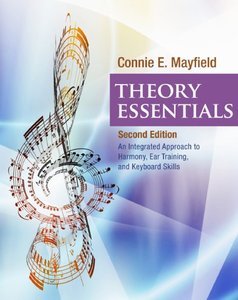Theory Essentials An Integrated Approach to Harmony 2nd Ed.

Theory Essentials: An Integrated Approach to Harmony, Ear Training, and Keyboard Skills, 2 edition by Connie E. Mayfield (71Mb)
THEORY ESSENTIALS, 2/e offers a unique, total solution to teaching music theory. Integrating all the components of the two-year music theory sequence, the text and its accompanying workbook synthesize the major topics in music theory with aural skills, keyboard applications, and examples from the literature.
Offering terrific value, THEORY ESSENTIALS 2/e replaces the need for the four separate texts traditionally required for the music theory sequence (theory, ear training/sight singing, keyboard harmony, and an anthology). The result is a remarkable, carefully-paced synthesis of these components that moves from a solid grounding in Fundamentals, Diatonic Harmony, Secondary Function chords, and Twentieth-Century Techniques.
download from free file storage
Reup done !. Olymoon
